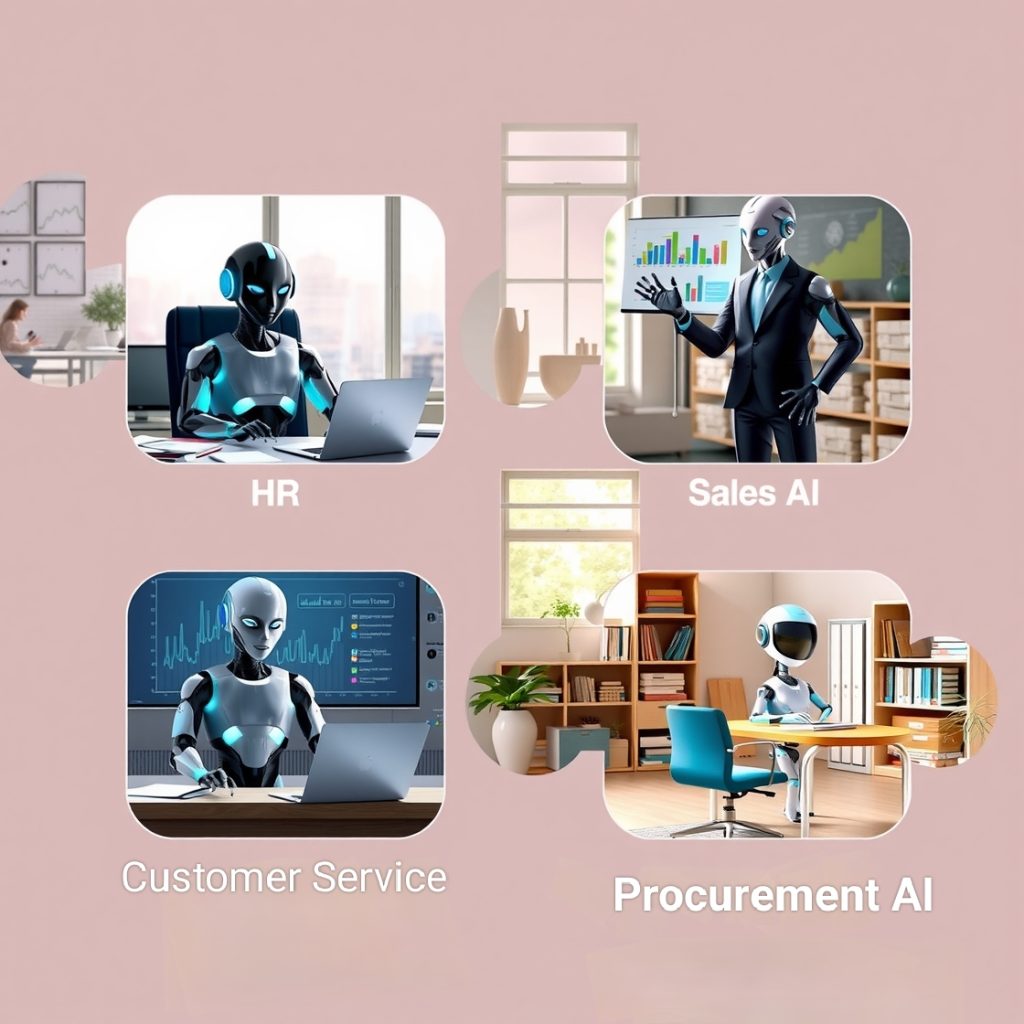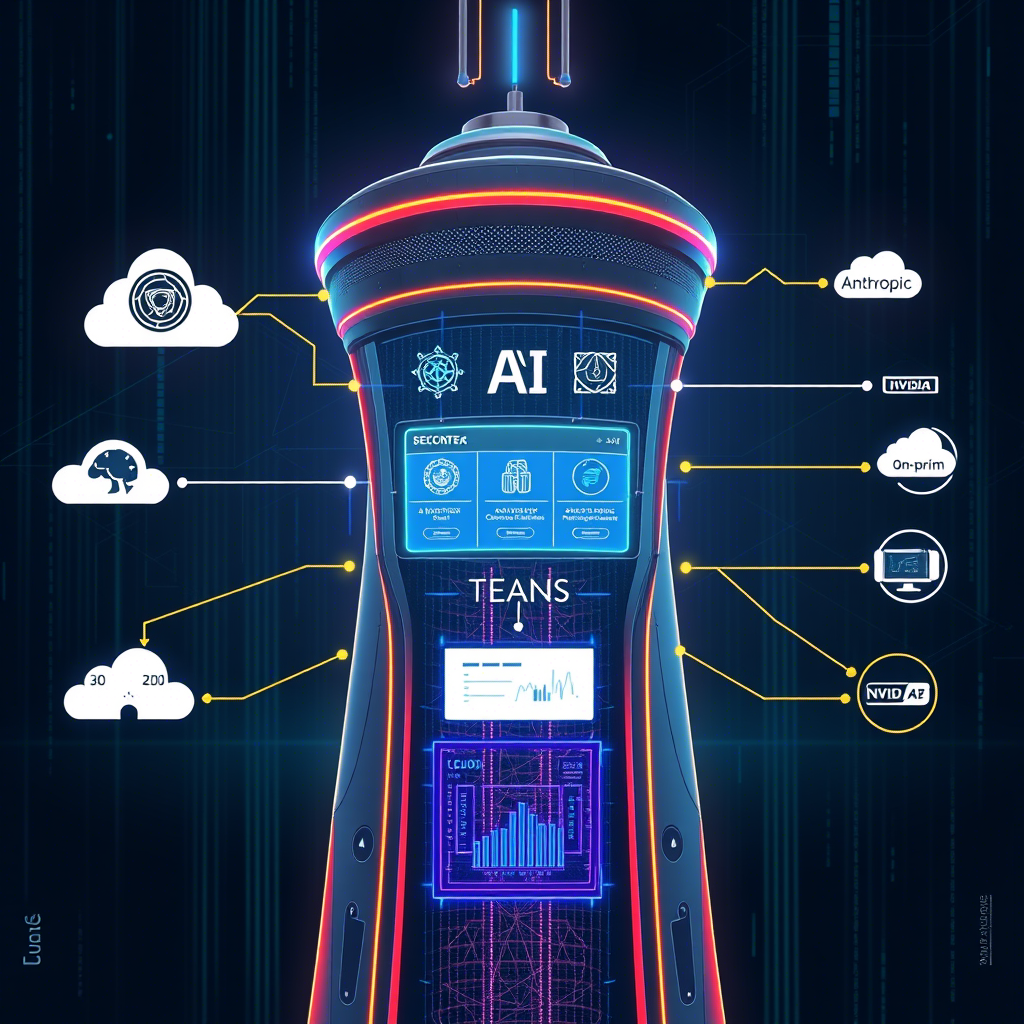Beneath the gleaming chassis of a Scuderia Ferrari Formula 1 car generating over one million data points per second, IBM Chairman and CEO Arvind Krishna delivered a defining message to thousands at the IBM Think 2025 conference: “AI is no longer speculative. This is happening now.” The declaration underscored IBM’s aggressive push to transform artificial intelligence from experimental technology into the operational backbone of global enterprises, with autonomous AI agents taking center stage.

The event served as the launchpad for IBM’s most comprehensive AI agent ecosystem yet, designed to automate complex business workflows while addressing critical concerns around governance, security, and integration sprawl. This strategic move positions IBM at the forefront of what industry analysts increasingly call “The Agentic Era,” marked by AI systems that move beyond simple chatbots to autonomously plan, reason, and execute multi-step tasks across enterprise environments.
The Platform: Watsonx Orchestrate Evolves into Agent Command Center
At the core of IBM’s announcement is a significant expansion of watsonx Orchestrate, now reconfigured as an enterprise-scale operating system for AI agents. The platform’s new capabilities aim to solve the emerging challenge of “agent sprawl” – the uncontrolled proliferation of disconnected AI bots creating operational silos and compliance risks.
Multi-Agent Orchestration: A breakthrough architecture now enables teams of specialized agents to collaborate in real-time. User requests are dynamically analyzed and routed across agents, tools, and skills, allowing for complex, multi-departmental workflows. For example, a procurement request could automatically engage inventory-checking, vendor-assessment, and contract-review agents without human intervention.

Agent Connect Framework: Addressing hybrid environments, IBM introduced an open framework to integrate third-party agents from platforms like Salesforce (Agentforce) and Anthropic into the watsonx ecosystem. This enables enterprises to maintain centralized control over agents developed across different vendors and open-source communities.
No-Code Development: The new Agent Builder studio allows business users to create or customize agents in under five minutes using prebuilt tools and templates. Simultaneously, the Agent Development Kit (SDK) provides developers with advanced coding capabilities, including local testing via containers and integration with observability tools like Langfuse.
Enterprise-Wide Visibility: A comprehensive tracing service and observability dashboard provide unprecedented transparency into agent decision-making, performance metrics, and audit trails – critical for regulated industries where AI accountability is paramount.

Domain-Specific Agents: From HR to Procurement
Moving beyond generic assistants, IBM unveiled a suite of industry-tailored agents available through its new Agent Catalog, signaling a shift toward verticalized AI solutions:
HR Agents: Already deployed internally at IBM, these agents automate employee support workflows (time-off requests, benefits updates) integrated with systems like Workday. IBM reports automating over one million HR tasks, resolving 95% of employee requests without human escalation.
Sales Agents (Public Preview): Targeting revenue teams, these agents automate prospect identification, lead outreach, and sales research, integrated with Salesforce and Seismic.
Procurement Agents (Public Preview): Designed for complex procure-to-pay workflows, supplier risk assessments, and vendor management, connecting to Coupa, Sirion, and Dun & Bradstreet.
Future Roadmap: Customer care and finance agents are slated for release later in 2025, alongside “utility agents” for web research, calculations, and data synthesis.

IBM’s internal implementation provides a compelling proof-of-concept. “We’ve transformed our HR function into an AI-driven operation that scales with our organization,” stated Neil Dhar, Global Managing Partner at IBM Consulting. The company’s ability to resolve 95% of employee service requests without human intervention demonstrates the tangible efficiency gains driving enterprise adoption.
Strategic Imperatives: Governance, Hybrid Infrastructure, and Ecosystem Growth
Recognizing that powerful agents create new risks, IBM emphasized its differentiated focus on trust and governance:
Granite 4.0 Models: Previewed at Think, these next-generation foundation models feature “unconstrained context length,” enabling deeper document analysis and reasoning crucial for legal, financial, and compliance tasks.
AI Model Gateway: This new layer allows enterprises to deploy and manage best-fit models (OpenAI, Anthropic, NVIDIA NIM) across hybrid environments – from public cloud to air-gapped on-premises systems – while maintaining consistent governance.
Data Sovereignty: watsonx.data’s June update integrates data lineage tracking with unstructured data processing, creating “governed data pipelines” before information enters AI workflows. “It’s AI with seatbelts,” remarked Hillery Hunter, IBM’s CTO for Infrastructure.

Infrastructure readiness emerged as a critical theme. IBM’s new LinuxOne 5 platform, capable of processing over 450 billion inference operations daily, targets industries requiring extreme security and performance. Featuring confidential containers and quantum-safe encryption, it reduces TCO by up to 44% compared to x86 alternatives – addressing soaring AI energy demands.
The partner ecosystem is rapidly mobilizing. IBM SVP Rob Thomas revealed unprecedented services partner engagement: “They want to build agents. They want a platform like Orchestrate to leverage multiple models and data repositories.” This momentum is reflected in IBM Consulting’s generative AI book of business, which surpassed $5 billion in Q1 2025.
Navigating the Hype: Realism Amid Revolutionary Claims
Despite the bold vision, IBM experts maintained nuanced perspectives on agent readiness:
Execution Gap: Maryam Ashoori, IBM watsonx.ai’s Senior Director of Product Management, noted only 16% of enterprises have moved beyond AI experimentation to scaling. “Agents are just starting to take shape,” she cautioned, urging businesses to fully consider risks before deployment.

Technical Limitations: Vyoma Gajjar, AI Technical Solutions Architect, emphasized that agents require “big leaps in contextual reasoning” to handle complex decision-making autonomously. Rigorous stress-testing in sandbox environments remains essential.
Organizational Readiness: Distinguished Engineer Chris Hay identified a critical bottleneck: “Most organizations aren’t agent-ready.” Success requires exposing enterprise APIs and restructuring processes around AI-native workflows – a transformation deeper than technology alone.
This balanced outlook resonates with financial realities. While IBM’s overall AI book of business surged to over $6 billion (with $1 billion added in Q1 alone), CEO Arvind Krishna acknowledged that clients now demand clear ROI, shifting from experimentation to value-driven deployment. The company’s stock reflects cautious optimism, trading near its 52-week high at $261.18, up 18.65% year-to-date.
The Road Ahead: Productivity Meets Transformation
Beyond automation, IBM positioned agents as catalysts for reimagining work. An IBM Institute for Business Value study revealed that 50% of CEOs are hiring for roles that didn’t exist a year ago, while one-third plan significant retraining initiatives.
Jean-Michel Garcia, CTO at BNP Paribas, exemplified this shift, describing the bank’s development of an “AI Factory” using IBM and Red Hat technologies. The project unifies infrastructure, containerization, and governed data pipelines to deploy AI in regulated financial operations – a model showing early traction across healthcare, defense, and retail.

The Bottom Line:
IBM’s Think 2025 announcements signal that enterprise AI has entered its integration phase. By combining multi-agent orchestration, vertical solutions, and hardened governance within an open ecosystem, IBM is betting that businesses will prioritize scalable, trustworthy automation over fragmented point solutions. As Krishna asserted beside Ferrari’s sensor-laden race car: “AI unlocks the value in your data.” The race to operationalize that value through autonomous agents is now fully underway.
Copyrights: Dhaka.ai



